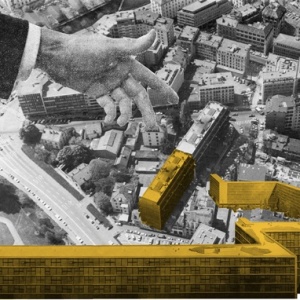Urban threshold building
Le Corbusier’s Immeuble Clarté in Geneva, 1930-1932
DOI:
https://doi.org/10.35305/23626097v5i8.106Keywords:
threshold, façade, city, street, Le CorbusierAbstract
This essay approaches the relationship between architecture and the city in the work of Le Corbusier; it analyzes an emblematic example carried out in 1930s: Immeuble Clarté in Geneva. On one hand, this collective building gives raise to technological experimentation (with the application of steel frame and continuous windows); on the other, it embodies the reflections on building types for the contemporary city taking as a starting point the rue corridor’s criticism. Immeuble Clarté also introduces a clear definition of the urban threshold as a place of confrontation between the dwelling and the city. In this building, which keeps together the redent and immeuble villa’s architectural and compositional principles, the entrance-door and the façade-window are in fact architectural and urban interiors that make it possible to build -by means of architecture- the place of mediation (the threshold) between the public and the private, between the building and the street in Le Corbusier’s city.
Downloads
Metrics

Published
How to Cite
Issue
Section
License
Open access policy
A&P Continuidad is a non-profit and open access publication. According to Mexico Declaration on Cultural Policies, the journal distribution is submitted to Creative Commons Attribution-Noncommercial-ShareAlike 4.0 International Public License (CC BY-NC-SA). “Neither the commercial use of the original work nor that of the possible derivative works are allowed. The distribution of derivative works should be submitted to the license regulating the original work. This license is not free.”
A&P Continuidad authorizes the partial or full reproduction of texts and graphs provided that the source is cited. Authors are exclusively responsible for the criteria expressed in the articles which do not necessarily reflect the opinion of the Editorial Committee or that of the Direction Board. The copyright of the published articles pertains to their authors or publishers.
Transfer of rights
The acceptance of an article to be published implies the author’s transfer of rights to the journal. Authors continue to have the right to use the material in future books or publications, approve or veto the republication of their works as well as the rights related to patents or other rights. Transfer of rights form may be downloaded here.























 This OJS site and its metadata are under a
This OJS site and its metadata are under a 

